Guyana’s Only Travel Guide You Need For A Great Trip in 11 Easy Steps
- Destinations Americas
Cruisit Team
- October 31, 2022
- 0
- 4923
- 80 minutes read
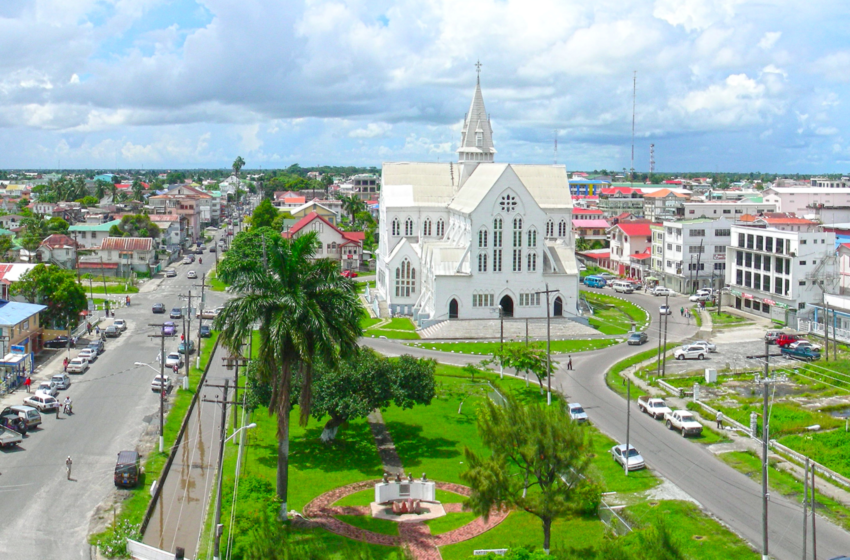
Around the first millennium BC, human settlements began to appear in Guyana. Arawak, Carib, and arguably Warao or Warrau peoples were among the earliest settlers, as was the case in many other Caribbean nations. These ancestors relied heavily on hunting and primitive kinds of cultivation for survival. Christopher Columbus discovered Guyana in 1498, and Spain claimed it. Nevertheless, the area between the Orinoco and Amazon deltas, known as the Wild Coast, was avoided. As a result, Spain ignored the area for a century until the Dutch colonized the coast. Around 1580, the Dutch erected a series of trading outposts upriver. Slaves from West Africa were brought to the Caribbean by the Dutch a century later to work on sugar plantations. In the 1700s, the Dutch and other Europeans organized the relocation of their estates downriver to take advantage of the fertile soils under Governor Laurens Storm Van’s Gravesande of Essequibo from 1742 to 1772. Guyana’s control changed hands an incredible number of times throughout the French Revolution and the Napoleonic Wars. Even Longchamps, now known as Georgetown, was founded by the French during their brief colonization of Guyana. By the end of the 18th century, British control was complete, and the region became known as British Guiana in 1831. After slavery was abolished, Africans settled in urban areas, while indentured Indian laborers were brought in to work the sugar cane fields, resulting in a chasm between the two groups’ cultures. Guyana remained under British control for the most of the twentieth century, until the country declared its independence in 1968.
Since Guyana’s independence in 1968, Burnham has served as prime minister and later, president. His socialist government was declared during his time as prime minister. In the meantime, in 1978, a strange event occurred when members of the religious group People’s Temple committed mass suicide. Guyana’s communist record was almost established until Hoyte began to distance himself from the late president Burnham’s beliefs in the 1980s. These principles gained more traction under Jagan’s presidency because of his support for democratic government and economic reform. Even though there hasn’t been much bloodshed in the almost 30 years since Guyana gained independence, there have been a few rallies, primarily around allegations of election fraud against several presidents. Nonetheless, political upheaval and a wave of violence erupted in 2002, and a catastrophic flood struck the area in 2005. Additionally, the United Nations international tribunal concluded the maritime border dispute between Guyana and Suriname in 2007, giving Guyana the biggest share. Despite the fact that Guyana still had to deal with issues like violent crime, ethnic conflicts, and periodic political turmoil, the country’s economy improved because to government investments in areas like agriculture, forestry, offshore oil exploration, and new roads and bridges. The oil boom that began in Guyana with the discovery of rich oil resources offshore in 2015 has given the country huge stakes, not to mention the discovery of 17 more fields by the end of 2020. However, ethnic conflict in Guyana remains a threat to the country’s democracy.
One of three “uncharted” Guianas off the northern coast of South America, Guyana is a rich but largely unexplored destination. It’s somewhat unknown at the moment, but it’s bound to become a major tourist destination. An unexplored jewel sandwiched between Venezuela, Suriname, and Brazil, it is surrounded by the Atlantic Ocean, the Amazon Jungle, and massive mountains. Great savannah plains fill the valleys and plateaus between these mountain ranges and valleys.
While Guyana is located on the mainland of South America, its culture is more in line with that of the neighboring Caribbean islands, such as Trinidad and Tobago. Even though it is not physically located in the Caribbean Sea, Guyana is nonetheless classified as a Caribbean country due to its deep cultural and historical link with the Caribbean. good energy and friendly people as typical in the Caribbean
Experiencing the richness of Guyana’s cultural legacy and diverse population is an experience that can only be had by traveling there. British, Dutch, and French influences may be seen in the city’s architecture, as well as its culture and cuisine. You may also go canoeing down broad rivers, meet the people, see wooden cities, and observe wildlife in their natural habitats, all without having to go too far from the city. The scenery is breathtaking at every turn.
“A wild and genuine West African country. From its offshore archipelago to its verdant jungles and plunging waterfalls, this country is a natural paradise. It’s hard not to fall in love with Guinea-Bissau, with its kind locals and diverse cultural traditions, cuisine, and diverse people.”
This is nature at its most pristine and it gets wilder. Forget about it if you’re looking for a luxurious vacation filled with cold drinks by the pool, spa treatments, and designer shopping. But, that is why you should visit Guyana; for the lack of all these things , I It’s an explorer’s dream. Those for those wanting to explore their own beach spot. If you want to get off the beaten path, Guyana is surely the place for you.
There hasn’t been a huge influx of tourists to Guyana yet, so every visit is like a real adventure. In most regions, mountain peaks remain unscaled. The majority of the tropical forests, unexplored. Its savannahs have mostly been left untouched. Traveling to Guyana will make you feel like a pioneer, t hat is, if you are one of the fortunate few who gets to visit Guyana. Despite the country’s inadequate tourist infrastructure, including its limited access to the internet and ATMs you will surely feel something else. Hike through pristine jungles, gallop over open savannahs, camp out beneath the stars, and paddle down winding rivers as your journey takes you deep into the untamed depths of this incredible place. Guyana’s untouched landscape and abundance of animals are sure to leave a lasting impression. The mud, bumps, and heat will all be worthwhile.
In the indigenous Amerindian language, the word “Guyana” means “land of many waters.” . The main rivers are the Essequibo, the Corentyne, the Berbice, and the Demerara, so it’s not hard to see why. There is largely uncharted jungle covering 80% of the nation. Aerial views of Guyana reveal a wild and unspoiled landscape, complete with several waterfalls and a dense jungle that extends in all directions, even up to spectacular summits like Mount Roraima, which sits on the boundary between Venezuela and Brazil.
Guyana is a true uncharted territory, a nation with few roads, unspoiled wilderness and abundant ecotourism opportunities, going to this nation will fill you with thrill.
Coconut trees, Caribbean tunes, and Hindu temples dominate the shore. When you leave the ocean behind, you enter a realm of waterfalls and rainforest, which eventually gives way to wildlife-rich savannas and remote ranches.
Despite being located on the Atlantic, Georgetown, the capital, is commonly referred to as the Garden City of the Caribbean. Its canals and broad, tree-lined boulevard mimic the design of the original sugar plantations. The streets are lined with blossoming trees and whitewashed wooden homes from the 19th century. The seawall is a popular place for nighttime strolls and, during Easter, is a riot of color from kites. A charming atmosphere, exciting nightlife, and delicious dining options.
Tucked away from the bustle of the city, the sparsely inhabited interior is nearly unspoiled, and rivers are sometimes the only route to get around. It has a more Amazonian feel, with its Amerindian settlements and exceptional wildlife-viewing possibilities. The dirt, uneven roads, and heat are all worth it to see the sea-turtle nesting areas along Guyana’s northern coast, the monkeys and jaguars in the jungle, and the enormous anteaters in the southern savannas.
Orinduik Falls, where the water cascades over jasper stairs and terraces, and Kaieteur Falls, which are almost five times as tall as Niagara, are also must-sees. Iwokrama Forest Reserve, where you may see the elusive jaguar, and Karanambu, where enormous river otters play, are two of the biggest lures for wildlife enthusiasts in the region’s southernmost reaches.
North of Shell Beach lies 145 km (90 miles) of protected Atlantic coastline where leatherback, green, hawksbill, and Olive Ridley turtles are allowed to breed in peace. The entire shoreline is made up of mangrove swamps teeming with wildlife sightings, including ibis, parrots, toucans, iguanas, and even river dolphins.
As a result of its time as a British colony, Guyana is one of the few South American countries that speaks English as its official language. In 1966, Guyana became a sovereign nation. Even though Guyana is located in Latin America, most Guyana citizens believe their nation to be part of the Caribbean. The Amerindian culture of the interior is emblematic of the region. Guyanese Creole is used along the shore, whereas a number of Amerindian languages are spoken inland.
In Guyana, you may find six completely separate cultures. In 2012, there were 10.5% Amerindians, 0.3% whites, 0.2% Asians, 40% people of East Indian heritage, 30% people of African descent, 20% people of mixed race, and 0.3% whites. The Amerindians arrived first, followed by the Africans who came as slaves and the East Indians and Chinese who came as indentured workers to cover the labor shortfall on the plantations caused by the abolition of slavery. The Europeans, you can probably guess where they came from. Aside from the ethnic tension between different groups in Guyana, the enitre population are warm and welcoming.
Guyana is one of the most distant countries you could ever visit. More people visit Antarctica, Hawaii, and Easter Island each year than visit Guyana, despite their greater isolation.
The deep forests of Guyana offer one of the world’s few remaining untainted adventure destinations. Despite a difficult history of political instability and interethnic strife, a cheerful and driven mix of people is steadily transforming the nation into the continent’s finest ecotourism secret.
Keeping active will let you take full advantage of all that Guyana has to offer. This Cruisit Guyana travel guide features a schedule that lets you have fun and see the sights. Get yourself to this undiscovered colonial paradise in South America and you will not regret it.. The following itinerary is designed for the high season in Guyana, but may also be enjoyed in the shoulder season. Your greatest fantasies will come true in Guyana, where you may spend days in the company of legend, or in the midst of lush peaks and dramatic mountains and picture-perfect scenery, and where you can spot hundreds of species while exploring on your hikes.
To top it all off, we’ll provide you a complete travel guide to Guyana so you can easily move throughout the country. Keep reading to find more about the top cities, landmarks, modes of public transportation, and other attractions Guyana has to offer. If you’re fired up, let’s get straight into the details.
- Spend the day in a tent and watch animals in the Savannah between Lethem and Rupununi.
- Saddle up and ride horses at the Rupununi area’s Saddle Mountain.
- Paddling the Rupununi’s Takutu River
- Experience the power of Kaieteur, the tallest single-drop waterfall in the world.
- Stop by the Cathedral of St. George.
- Tour the vibrant Georgetown, Bourda Market
- Get to know the mangroves near Shell Beach.
- Experience the beauty of the Iwokrama Forest Reserve.
- As the Republic’s birthday, February 23, is celebrated, folks dress up for Maharamani (the celebration of a job well done) with colorful street parades and steel bands.
- Visit the Makushi and learn about their forest culture.
- Hang with the cowboys of the south
- Whether at the Iwokrama Forest Reserve or the Rupununi Savannah, you may get up up and personal with native species.
- The Kaieteur Falls are located in the biodiverse Kaieteur Park, which is a trekkers’ or aviators’ paradise.
- Discover the beauty of Mount Roraima.
- Travel to the Rupununi to see the biggest lily in the world.
- To capture (not kill) the world’s largest spider, you must go on a search for the Goliath Birdeater.
- Catch arapaima, the biggest freshwater fish in the world.
- To enter Guyana, visitors must have a valid yellow fever vaccination certificate.
- Take extra precautions because of the increased danger of petty theft in Georgetown, as well as armed robberies in the major cities. Only taxis should be used for late-night travel.
- Though English is the official language thanks to the country’s history as a British colony, a Caribbean strain known as Guyanese Creole runs over top, making it difficult to comprehend if you listen to two natives conversing.
- Be prepared for the fact that drivers in Guyana tend to be careless.
- Do not expect the finest road conditions if you intend on driving.
- You can’t just go off and explore the Savannah or the jungle without a guide who knows what they’re doing.
- With rainforest covering 80 percent of the country, Guyana is a paradise for ecotourists.
- Most of Guyana is a malarial hotspot, so be sure to stock up on Malaria Precautions before you go. It might be wise to invest in some insect repellent as well.
- It will be challenging to find medical assistance outside of Georgetown. Don’t forget to purchase adequate travel insurance in case you have to summon a helicopter or private jet.
- The internet and phone services effectively cease to function outside of major urban areas. Prepare to spend all of your time disconnected from the outside world.
- It is possible to travel alone, although it is difficult because of the need to prearrange transportation to distant locations and up rivers, and since much of the interior’s lodging can only be booked by radio. Minibuses are inexpensive yet dangerous along the seaside.
- Since Georgetown doesn’t offer much in the way of entertainment, you might wish to rush through it. Inner Guyana is where the majority of the country’s charm lies.
- Since Guyana appears to have escaped widespread attention, it has become an attractive destination for those who want solitude.
- One of the world’s greatest areas of unspoiled rainforest may be found in Guyana, and the country’s Giant species of animals reflect this. The government is making every effort to protect the country’s tropical woods and animal population. The significance of your visit cannot be overstated.
- There is a stunning and surprising mingling of cultures that you will experience.
Crime & Scams in Guyana
While most tourists don’t have any problems, Guyana does have a high crime rate. You need to safeguard your person and your possessions by using common sense. Occasionally, there will be a political demonstration. Crimes of violence, such as murder and armed robbery, are widespread, particularly after dark. Often, when significant crimes occur, local police may not have the means to appropriately respond. Keep your distance from Tiger Bay and Albouystown, and be cautious in Sophia, south Georgetown, Buxton, and Agricola. Keep an eye on your belongings and be cautious in the Stabroek Market, as robberies have been happening often there. Never venture out at night or on your own in Georgetown, especially in the busiest districts. Due to the widespread corruption, muggings, robberies, and other forms of violent crime are routine occurrences. Take extra precautions.
Be especially cautious if you are in public places frequented by foreigners, near official buildings, popular tourist sites, or on public transit. Avoid going to slum regions of the city. Take extra precautions on city streets, especially after dark or if you are alone. Carry no significant sums of money or wear expensive watches or jewelry. Avoid using your phone while walking down the street.
Healthcare in Guyana While Traveling
Both the government and the private sector in Guyana contribute to the country’s healthcare system and its medical infrastructure. Life expectancy, sanitation, environmental health, and the overall health of the people have all significantly increased in Guyana during the past decade thanks to the country’s improved healthcare system. However, the healthcare system in Guyana is poor when compared to the healthcare systems in the West. You will be able to get treatment to almost all the basic health conditions, however, emergency medical evacuation may be needed in high risk conditions.
Always check that your immunizations are up to date before leaving on a trip. Chickenpox (Varicella), diphtheria-tetanus-pertussis (DTP), influenza (flu), measles-mumps-rubella (MMR), polio, hepatitis, typhoid, and shingles vaccinations are among the most widely prescribed vaccines in the world. A rabies shot is something to think about if your plans include interacting with wild animals. You will need a yellow fever certificate to enter the country. Take your vaccines and bring any medications you need with you.
When visiting Guyana, you are not legally required to purchase travel medical insurance. But, it is always important to have comprehensive medical coverage when traveling because you never know what you could encounter while overseas, especially if in the event of an emergency, a medical evacuation could be a must for your safety.
Only eat foods that are cooked and served hot, avoid food that has been sitting on a buffet, and eat raw fruits and vegetables only if you have washed them in clean water or peeled them.
Only drink beverages from factory-sealed containers, avoid ice because it may have been made from unclean water, and only drink pasteurized milk.
Wash hands often with soap and water for 20 seconds, especially after using the bathroom and before eating. If soap and water aren’t available, use an alcohol-based hand sanitizer that contains at least 60% alcohol. Also, keep your hands away from your face and mouth.
Because of its proximity to the equator, the weather in Guyana is always simmering. Travelers will encounter a tropical environment with daytime highs of 24°C to 38°C and lows of 9°C to 15°C at night. In much of the nation, precipitation peaks between May and July, or somewhat later. From September through April, Guyana has its dry season, making this time of year the best for tourism. Packing for Guyana? Focus on lightweight, quick-drying outdoor items. Guyana has a consistently hot and humid climate. The difference is whether there’s rain or not. So if you’re planning on traveling in Guyana’s wet season, roads are muddy, travel is difficult at best and irritating at worst.
Shoulder Season
The dry period between around the middle of July and the end of November is the another one of the two dry seasons. The weather in Guyana at that time is as perfect for sightseeing. The forest’s canopy will provide welcome relief from the sun’s heat, but the days will still be on the warm side. This is about the middle of July to the end of November on the coast, and around the middle of September to the end of April in the jungle and savannahs. You can also witness otters and caimans resting on the banks from July to November, when the water level is lowest.
Traveling across Guyana’s jungles and untamed savannahs is made simpler during these periods when highways in the country’s interior are the most accessible, thanks to the lesser rain. So, if you’re thinking of going on a camping trip in the outdoors, you don’t want it rainy. The rivers are lower, and the risk of kayaking is decreased. If you want to see the country outside the confines of the capital, Georgetown, you need to arrange your trip during the dry season. This is a good time to visit Guyana, given it falls during the traditional summer break for much of the world.
High (Peak) Season
From January through March, when the rainy season has ended, is one of the driest seasons and the finest time to visit Guyana. The peak tourist season is here, so you won’t be entirely alone. The Kaieteur Falls are roaring with water, the grass is verdant, and there’s less rain. Because of the low water levels, the high season is the best time to visit Guyana, where you can spot otters and caimans sunning themselves on the banks. Traveling across Guyana’s jungles and untamed savannahs is made simpler during these periods when highways in the country’s interior are open and accessible.
Rivers are more peaceful and kayaking is safer because of the lower rainfall when considering adventures in the wilderness. In order to avoid being soaked, anyone who wish to explore areas outside Georgetown should do so during the dry season.
For those traveling from the United States, Canada, or elsewhere in the northern hemisphere who are looking to escape the bitter cold this winter, and who want to make advantage of the holidays to do so, this is one of the best times to visit Guyana.
Off-Season (Low Season)
You should reconsider your trip to Guyana between the months of May and July and December to February, the country’s two wet seasons. As the off-season and rainy season coincide, travel during this time presents not only a number of difficulties, but also certain risks. It’s not just the rain that makes this time of year unpleasant in Guyana; major highways become impassable, hotels close, and sights disappear. Therefore, unless you’re traveling to see some jaguars (very unlikely), this is not the best time to go. If you expected to set up camp, you’re going to be disappointed. Due to the rain, most roads are flooded, and the ground is muddy, and a greater danger awaits kayakers as rivers grow.
By Plane
Flying into Georgetown Airport is the quickest and most hassle-free method to reach Guyana. It will take you around 45 minutes to get into the heart of the city from the airport, which is situated 40 kilometers away. For international flights, the best option is to fly through Cheddi Jagan International Airport (Timehri Int’l), Guyana’s main hub. There are nine airports in eight different countries from which direct flights arrive in Georgetown. Guyana is served by a variety of airlines, including JetBlue, Copa Airlines, Copa Continental, American Airlinesm interCaribbean Airways, British Airways, Fly Always, Copa, and Surinam Airways. From New York and Miami, as well as from Port of Spain, Trinidad & Tobago, Caribbean Airlines operates the most frequent direct flights to Guyana. You’ll need to pay a $20 departure tax in cash when you check out of the nation.
By Car
One of the possible routes is from Canaima, Venezuela to Georgetown, Guyana, or from Paramaribo, Suriname, taking around 9 hours. In spite of the fact that the borders with Suriname and Venezuela are sometimes blocked due to disputes, risk-taking drivers can still try to enter Guyana through road from those nations. Since most roads are dirt tracks, traveling on them is tough and full of obstacles. The possibility of being robbed at phony police roadblocks has also been reported multiple times, which increases your risk. So be advised.
By Bus
Champ’s Bus Service operates the only route from Paramaribo, Suriname to Georgetown by bus a couple of times a day; the trip takes around 10 hours and costs $7. Other than the ones from Guyana, no other bordering or neighboring nations provide bus services.
By Boat
Guyana’s Moleson Creek and Suriname’s South Drain are connected by the Canawaima Ferry Service. Make sure you use licensed services since you could also face arrest if you take an unlicensed water taxi. Yachters wishing to enter Guyana wth their private boats must first cross customs at the port of Bartica, although travel to these waters are no advisable due to reports of piracy.
By Car
The streets of Guyana are, to put it mildly, packed. It’s not uncommon to see large trucks, automobiles, motorbikes, minibuses, bikers, and even horse-drawn carts navigating the crowded, unkempt streets with a sense of urgency. In addition, there is a never-ending stream of people, animals, and other obstacles to avoid.
Not everyone can handle the challenges of driving in Guyana. The roadways are shared by both aggressive, fast drivers and painfully sluggish automobiles. Driving behaviors such as speeding, turning without signaling, and tailgating are frequent in Guyana.
Nighttime driving is very dangerous since many roads are either not illuminated at all or have inadequate lighting, and many other drivers fail to dim their headlights while coming from the other direction. Be patient and watch out for pedestrians and sleeping livestock on the roads. In fact, if at all possible, you should avoid driving at night. There have been instances of robberies occurring at fake police blockades on highways, so avoid traveling at night at all cost.
By Taxi
Though regular, Guyana’s public bus service has much to be desired in terms of reliability and safety for its passengers. In this little nation, taxis are the norm for getting around, but riders should negotiate a price beforehand. Taking a taxi is the safest option for tourists. Only taxi services authorized to pick up and drop off passengers at the airport should be used by visitors. The uniforms they wear consist of crème shirt-jackets, black pants, and identification badges. Prices are set and published at the airport. Transportation between the airport and Georgetown often cost between $25 and $30.
By Bus
If the thought of hiring a car and navigating Guyana on your own has worn thin (we don’t blame you), take use of the country’s extensive network of minibuses. They are the most affordable option, but it doesn’t come without risk.
Mini-buses are notorious for carrying anything from 12 to 15 people and have been involved in a disproportionately high number of deadly car accidents. The dismal standards of upkeep, and many are still on the road despite being dangerously damaged. So it’s no wonder, why drivers are stereotyped as aggressive and speedy given the low cost involved.
By Boat
As a result of the Berbice Bridge’s completion, commuters from Georgetown to Berbice and further to Suriname through the Moleson Creek crossing will save time and energy. The waters off the coast of Guyana, however, may be perilous for anybody on a boat trip.
There have been several reports of pirate activity, therefore it is important for everyone on any kind of boat to remain on high alert. Pirates frequently cruise the oceans looking for unsuspecting ships to board and plunder. Those who are cooperative are rarely harmed.
SIM Cards & Calls in Guyana
SIM cards may be purchased for 2,000 Guyanese dollars (9.60 US dollars) from Digicel and GTT retail locations, as well as at SIM sellers such as supermarkets, drugstores, and electronics stores. At the airport in Georgetown (also known as the Cheddi Jagan International Airport), you may purchase a SIM card (Digicel only). Digicel offers a 7-day plan with up to 2 GB of data, unlimited voice minutes, and unlimited text messages for just 1600 GYD. A weekly package from GTT with 1.5 GB, minutes, and SMS begins at 1370 GYD.
Alternatively, you may also get a prepaid eSim card from companies like Airalo, SIMCorner, HolaFly, or Nomad. All the providers offer data-only plans that may be used with an eSim-enabled phone, so make sure your phone is compatible. It is also possible to sign up for a Solis WiFi Hotspot. Check before you travel because they only serve select areas. Airalo provides the most extensive coverage of over 180 nations.
Local Internet & WiFi in Guyana
Since almost half of the population has access to the web, it shouldn’t be too difficult to maintain your connection while in Guyana. The maximum download speed for a mobile device is from 60 and up to 150 Mbps, whereas the average download speed for a fixed broadband connection is 40 Mbps. The majority of hotels and other places to stay offer free internet access with the reservation, however, always check before you book.
Top Places in Guyana
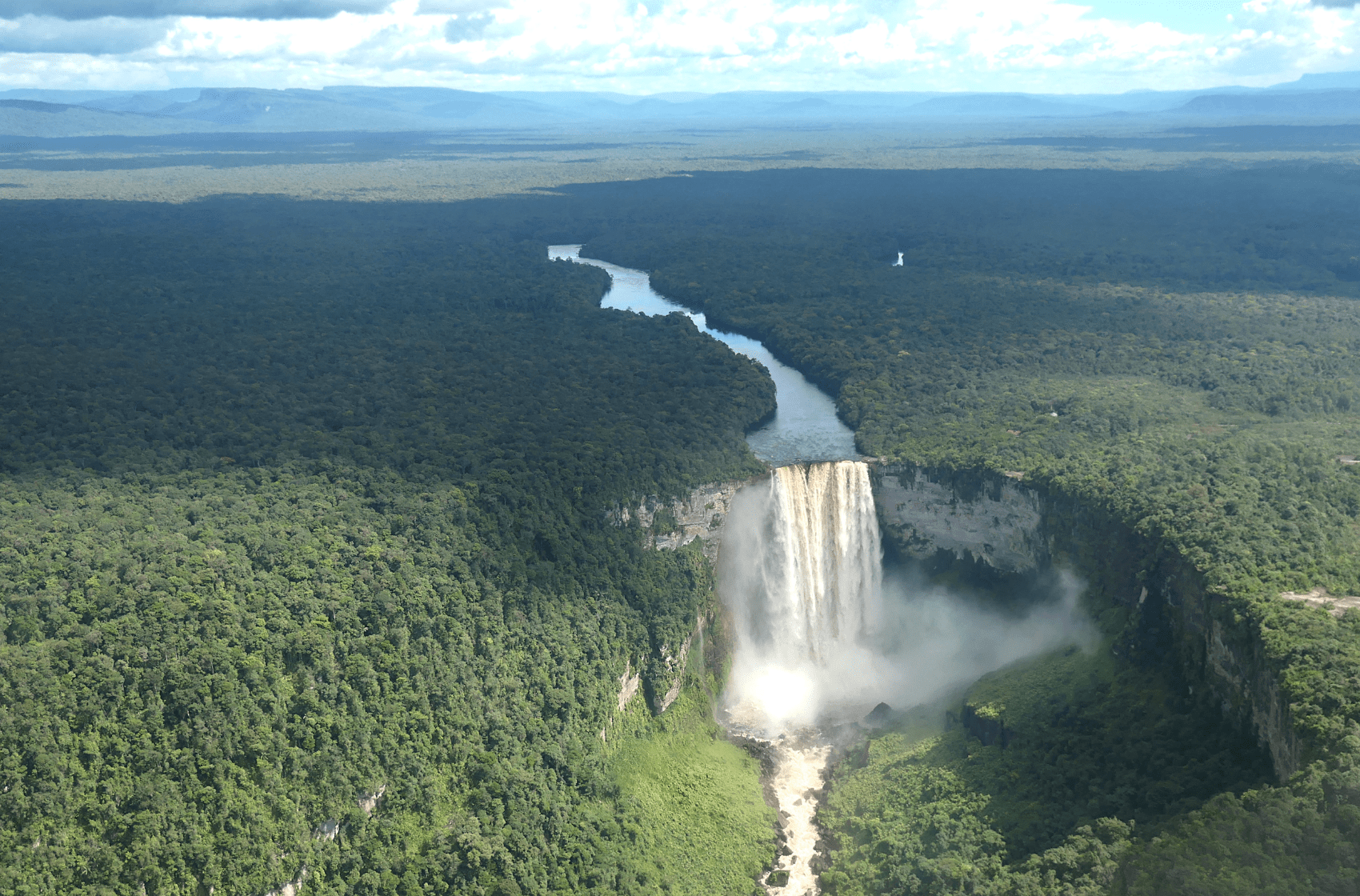
Kaieteur Falls
Kaieteur Falls is the world’s largest single drop, almost 5 times that of Niagra, and the most powerfall waterfall by the sheer volume of water. It is part of the Amazon Rainforest and may be found in Guyana’s Potaro-Siparuni area, which includes the Kaieteur National Park on the banks of the Potaro River. When compared to Niagara, and Victoria Falls, Kaieteur Falls towers above both, since a single drop forms the waterfall. The Potaro Plateau extends upstream from the falls until it meets the Pakaraima Mountains’ escarpment in the distance. The views from the sky are awe-inspiring, hugged by verdant forests in every direction.
Island is a critical nesting ground for green sea turtles, with annual nesting rates ranging from the low 7,000s to the high 30,000s. This island has a lighthouse that stands 27 meters in the air.
St George’s Cathedral
St. George’s Cathedral in Georgetown, Guyana, is an Anglican place of worship. The peak of the wooden church rises to a lofty 43.50 meters. Guyana’s bishop resides there. Sir Arthur Blomfield was responsible for the building’s design and was first opened to the public on August 24, 1892. It wasn’t until 1899 that construction on the structure was finally finished. This national landmark may be found on Church Street in the heart of Georgetown.


Fort Zeelandia
Founded in 1744, Fort Zeelandia was the capital of the Dutch colony of Essequibo, which is today a part of Guyana. In 1752, the island’s Court of Policy was established to serve as the colony’s supreme court and legislative body. Located in Guyana’s Essequibo Islands-West Demerara area, Fort Zeelandia is situated on Fort Island, a fluvial island in the delta of the Essequibo River. The modern brick fort, erected in 1743 for the Essequibo colony, replaced a wooden fort built in 1726 and is one of the oldest constructions in Guyana (not to be confused with Fort Zeelandia in Paramaribo, Suriname). In 1739, the fort took the position of Fort Kyk-Over-Al as the administrative center of Essequibo.
Iwokrama Forest
Located in the center of the Guiana Shield, the Iwokrama Forest is a natural reserve and is one of just four remaining virgin tropical forests in the whole globe. It’s a key transitional region in terms of climate, geography, human history, and ecosystems. The Pakaraima Mountains to the west and the isolated highlands of central-east Guyana to the east form the Iwokrama Forest’s western and eastern boundaries, respectively. The watershed for the Burro-Burro River, which passes through its middle, is almost entirely contained inside the forest. There is a dense lowland tropical forest canopy in this location that is 20-30 meters in height.
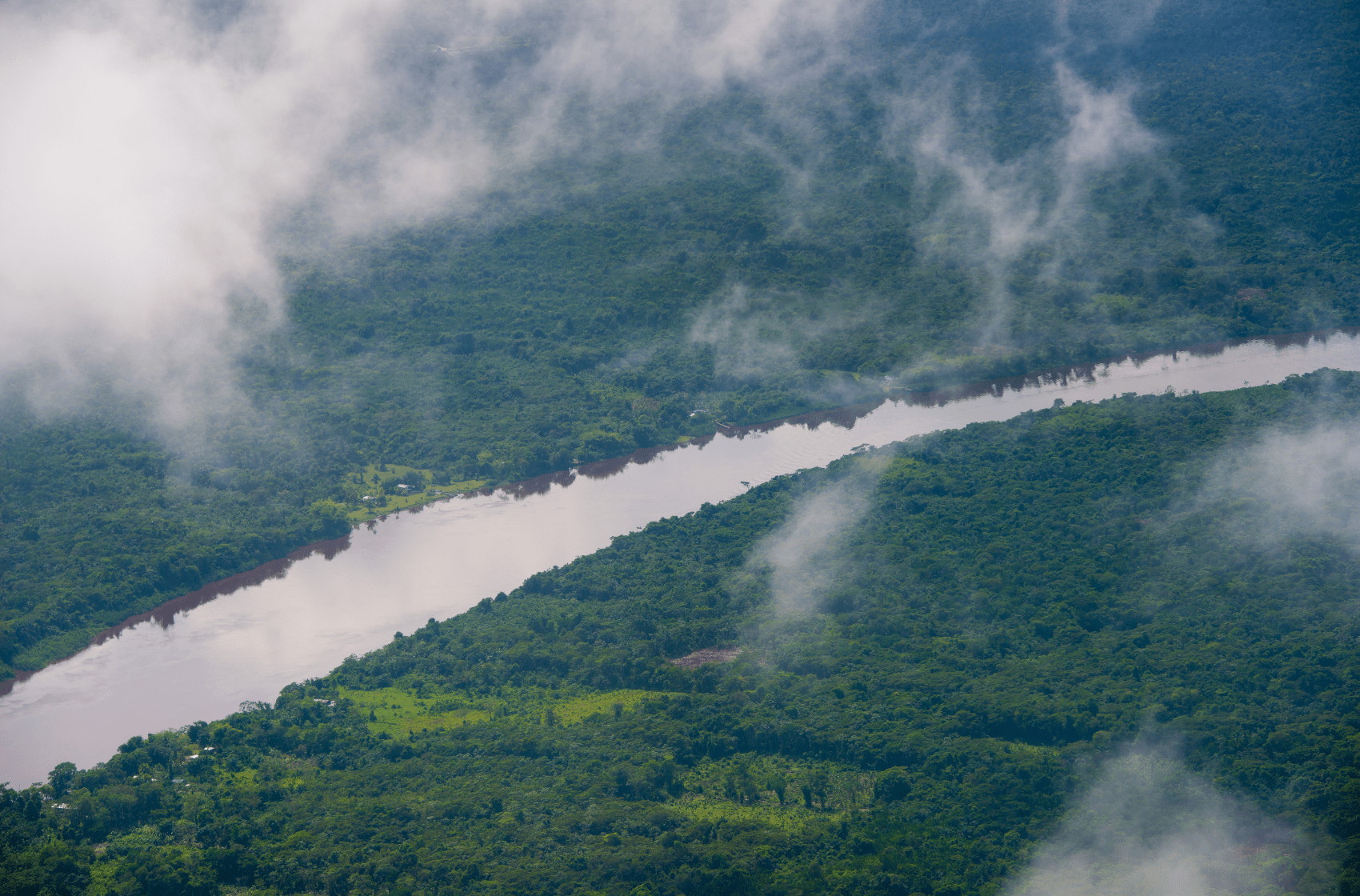
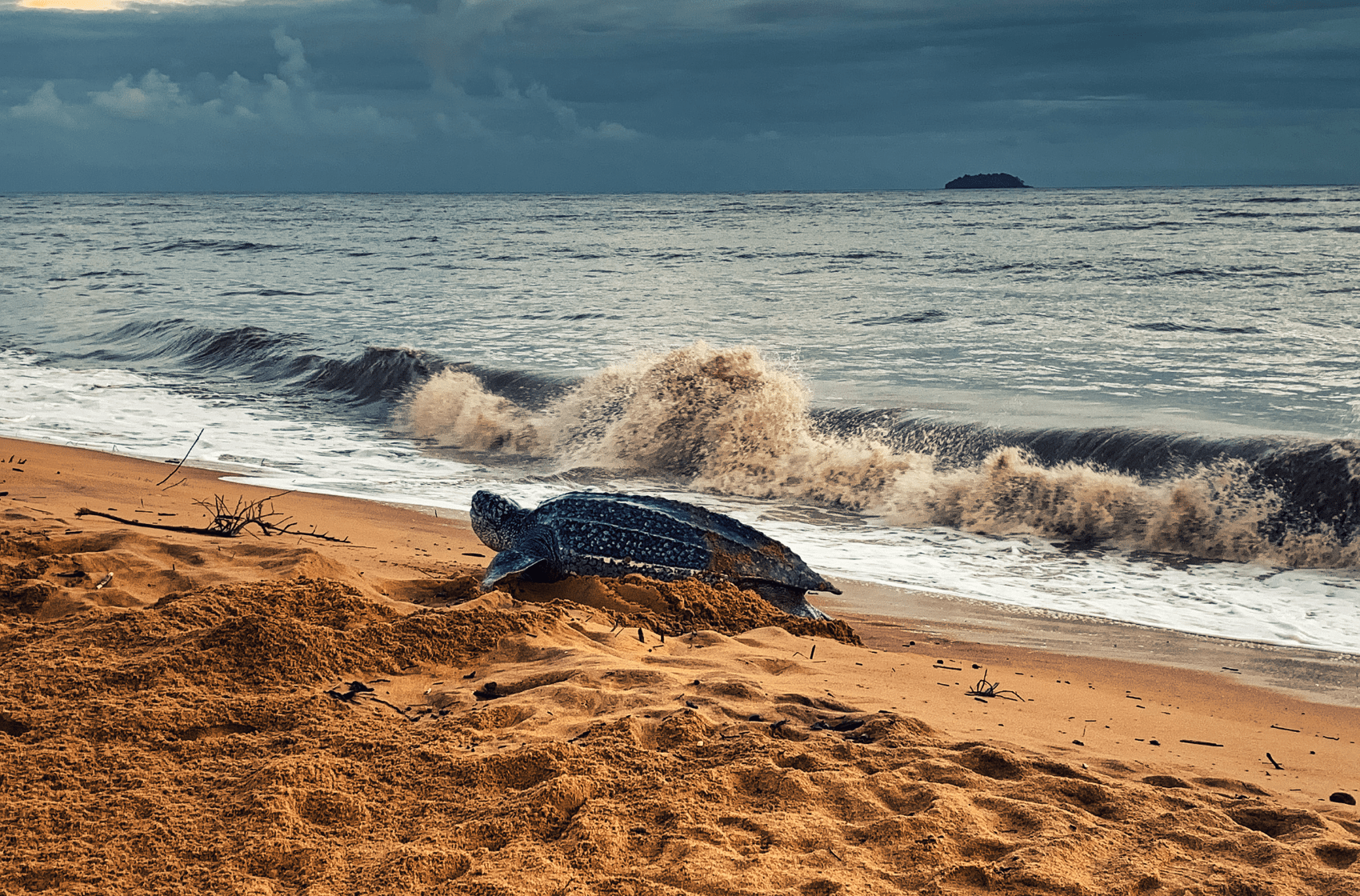
Shell Beach
Four of Guyana’s eight sea turtle species—the Green, Hawksbill turtle, Leatherback, and Olive Ridley—use Shell Beach, an Atlantic coast beach in the Barima-Waini Region, to lay their eggs. About 120 kilometers of Shell Beach exist. The Guyana Marine Turtle Conservation Society oversees efforts to protect turtles from being killed for their meat and eggs. Although Shell Beach is not technically protected, conservation efforts have been underway to save the nesting sea turtles there since the 1960s.
7-day Itinerary in Guyana
Day 1
Arrive in Georgetown
We advise that you arrange for a tour or transportation to your accommodation prior to your arrival at Guyana’s Cheddi Jagan International Airport. In that case, you should only get into a cab that has been officially recognized by the airport. Get yourself to Georgetown, drop your luggage off at your hotel, and then, if time permits and the sky is clear, go for a stroll. You may also stay in your hotel to unwind if you had a lengthy and exhausting trip. The fact is that your itinerary in Guyana is jam-packed with exciting activities, so resting may be the better choice.
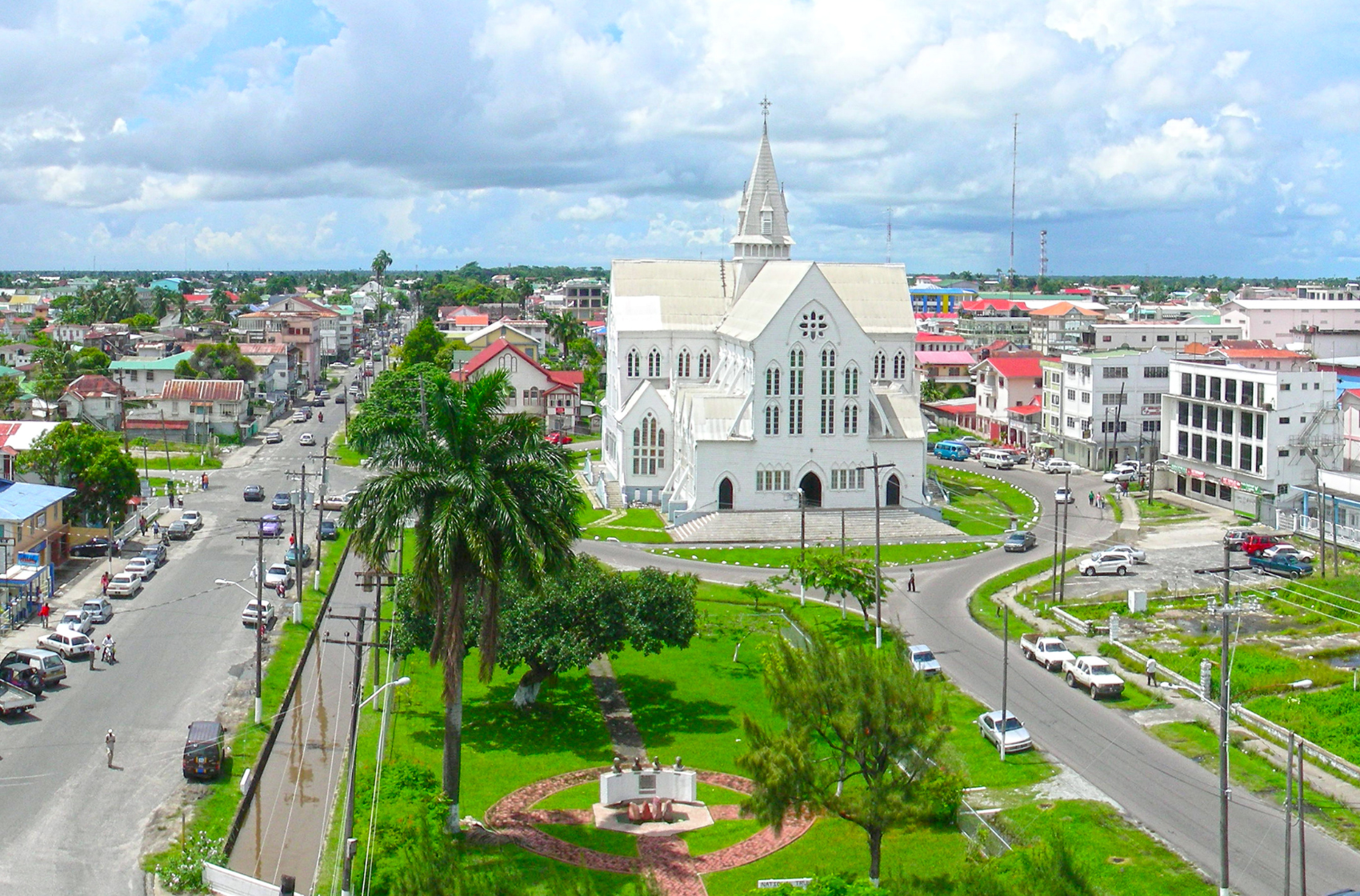
- Backpacker:
- Budget:
- Mid-range:
- Luxury:
Roraima Duke Lodge
Kings Hotel
When it becomes dark, a foreign city may be twice as dangerous - especially if you don't understand the language and are unfamiliar with the area. There is some reason to be alarmed about walking alone in the city since there is a high crime rate in Georgetown, with some of the most prevalent with tourists are pickpockets. You could walk safely at day, but be especially wary while walking at night and be alert in crowded areas or unlit alleys or streets. You can always take taxis, if you don't feel comfortable, Be wary of petty crime by taking precautions mentioned in the safety section above.
From the Airport to Georgetown's Center


Day 2
Off to the Jungle
It’s time to go camping in the woods! You may get a domestic aircraft to Lethem from Eugene F. Correia International Airport. It takes roughly 90 minutes to make the trip, barring traffic. To ensure that we would arrive on time, the cops escorted our group. The transfer must be scheduled in enough of time for you to make your next flight, so be sure to communicate this to your travel agent.
Traveling by plane from Georgetown to Lethem just takes an hour. You can see Brazil from Lethem. This is the largest settlement in the Rupununi area, and its port of entry and exit for the surrounding savannas.
If you’re going on this adventure trip, you’ll start in Lethem, where you’ll meet your guide and get your supplies for the week. Introducing the ATVs and 4X4s that will be your conveyance around the savannah, and getting a good understanding of how they function and the maintenance procedures to keep them in tip-top shape.
All of your food needs throughout the Savannah journey will be met, as your guide will supply all of the necessary meals. All day snacks and a full ration of dinner cooked over the campfire are part of this. As you go for the Savannah adventure the next day, we recommend you keep a clean change in Lethem, as you will be completely wrecked tomorrow. Also, bring a waterproof bag to put the belongings you will need.
Day 3
Savannah Excursion
The time has come to depart Lethem and start your safari across the southern region of Rupununi. You will be the one behind the wheel, navigating the course through any and all terrain challenges (rivers, savannah, hills, etc.). Spend the day riding and taking turns driving ATVs and 4x4s down the Takatu River while the guide scouts for a suitable camping place.
It’s time to figure out how to set up your hammock after a day of riding. Tonight you will be sleeping outside, under the stars. Remember to put up your stuff on the hooks and tassels, and give it a good shake before you use it. Pests of any kind are not welcome in your footwear or luggage.
The nicest part of the day is taking a dip in the stream after you’ve set up your hammock. Use this time to clean up and change into clean clothing. In the meanwhile, your guide will build a campfire so you can begin cooking over it. After a hard day in the sun and dust of the rugged roads, everything you eat will taste like heaven, anything.
Sleeping in a hammock might be hard at first, but you will get used to it. When you zip up the mosquito net and switch out your headlamp, you will be left with a memorable sensation: gently swinging in the pitch blackness of the hammock. An incredible experience to hear all the unique sounds of the savannah, and take delight under the moon and stars.
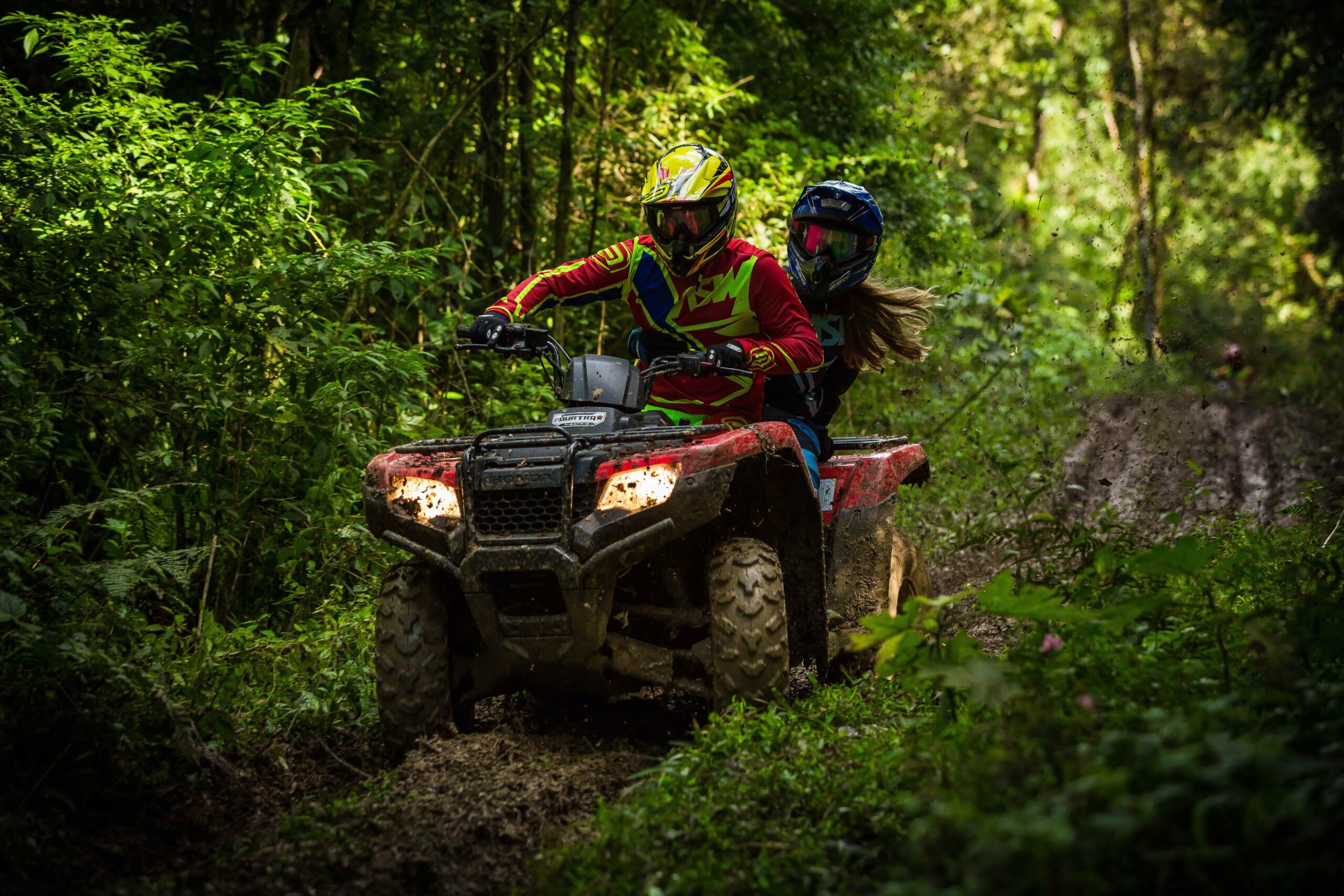

- Backpacker:
- Budget:
- Mid-range:
- Luxury:
Takutu Hotel
Surama Ecolodge
When it becomes dark, a foreign city may be twice as dangerous - especially if you don't understand the language and are unfamiliar with the area. There is little reason to be alarmed about walking alone, since there is a somewhat low crime rate in Lethem, with almost no occurrences with tourists. You could walk safely at day and night, but you might want to be wary while walking at night and be alert in deserted or unlit alleys or streets. You can always take taxis, if you don't feel comfortable, Be wary of petty crime by taking precautions mentioned in the safety section above.
From the Georgetown to Lethem

Day 4
Day Trip
After breakfast, you should either continue your trip in Guyana, or go to Cayenne, French Guiana, to take a quick tour and visit the Space Center. If you opt to go next door, the 700-sq. km site, created in 1964 by the French space agency, is a wonderful experience to have. With modern facilities, this is a responsive and high-performance space center, and it is among the best in the world. After this visit, drive to Cayenne, the capital of French Guiana, where you will take a city tour. Visit the highlights of the city and the heritage sites with their beautiful architecture. After the tour, go to your booked hotel in Cayenne. However, this option will be both pricey and exhausting.
Day 5
The World’s Largest Falls
This morning, travel to Guyana’s most well-known landmark. Take a 16-seater jet over the Tepui Mountains to Kaieteur Falls for a beautiful overflight of the bush. Immediately following the thrilling flight or the longest hike of your life, you will arrive at Kaieteur Falls and take some time to explore the area and get up close to the breathtaking waterfalls.
There is a short and simple trail that leads to the two lookout sites. The hike to the first lookout point is short and sweet. You can get a better look at the waterfalls and the surrounding foliage from the first vantage point, which is located closer to the falls itself. You can see more of both waterfalls in the second one. In addition, the river’s entrance into the canyon will be visible.
Only a few kilometers away is a rustic wooden inn, but there is no building near the waterfalls themselves. At a leisurely stroll, the nearby airfield can be reached. We truly hope things there remain unspoiled.


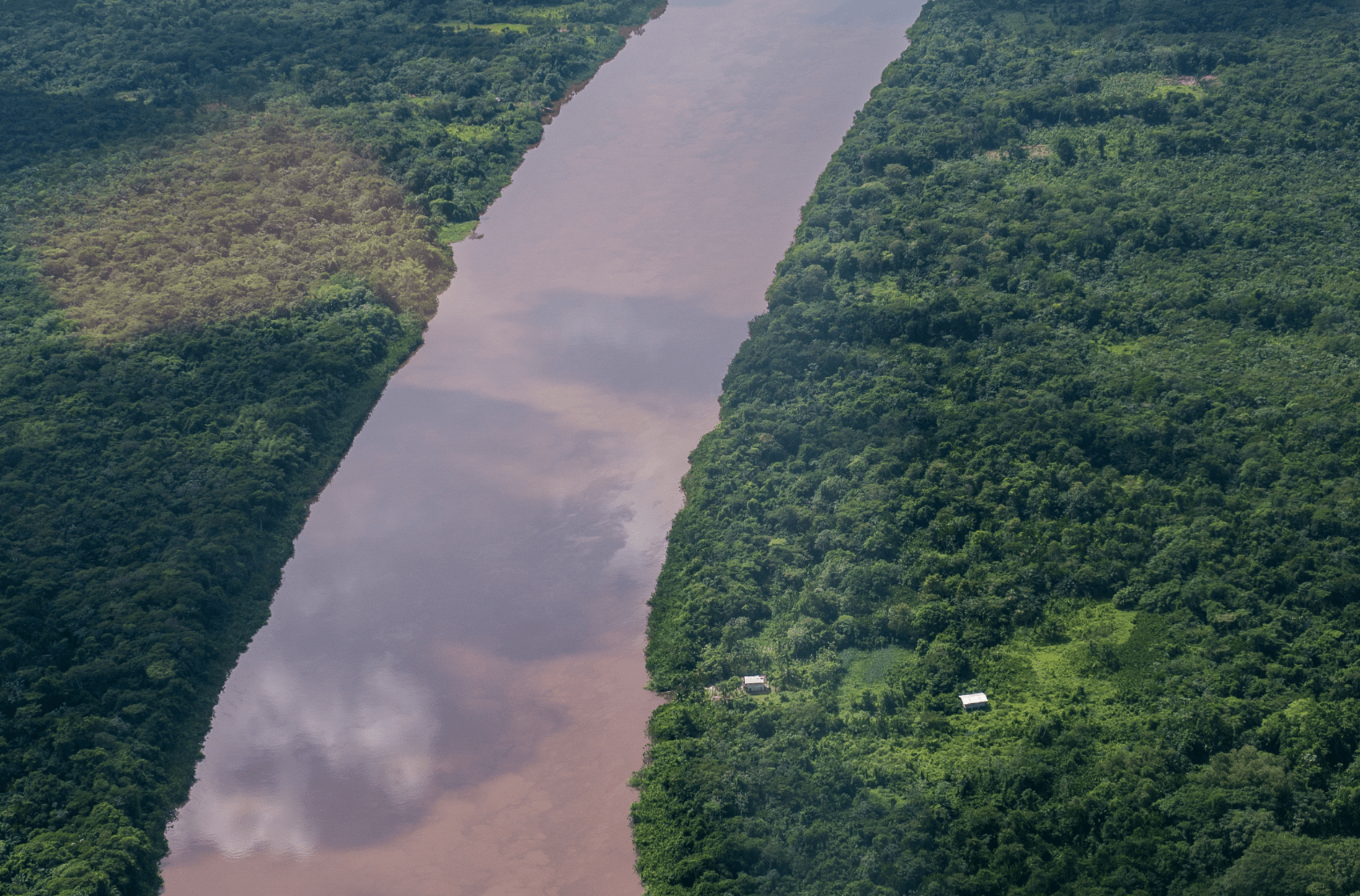

Day 6
A trip down the Essequibo
Back in Georgetown, go aboard a boat for a ride along Guyana’s longest river, the Essequibo. The Essequibo River rises in the Acarai Mountains on the boundary between Brazil and Guyana and travels north for a total of 1,014 kilometers (630 miles) before it reaches the Atlantic Ocean.
It is possible to stop at many Dutch forts along the way on Fort Islands. Fort Zeelandia, a Dutch fort constructed in 1743 for the Essequibo colony, is one of the most fascinating forts in the area. It’s one of the country’s oldest buildings. Additionally, the fort islands are home to a number of luxurious resorts and refreshing waterfall pools. To break up the day, stop by one of the stunning resorts for lunch.
In Georgetown, one of the best places to get a bite to eat after a day on the water is at the Bistro, located on the hotel’s ground level. Even if the service is painfully sluggish (island time is a thing), the cuisine is out of this world. What’s better: a steak, a burger, or a veggie burger?
Day 7
Last Hours
Your last day after breakfast can be well spent strolling Georgetown for the last time before you head to the airport. If you have more days to your trip you could add either more things in Guyana, or head next door to Suriname or French Guiana. If you want to add more destinations in Guyana, you might want to add Saddle Mountain Ranch while you’re in the Savannah. This gives you a chance to see the beauty of the simple life, raising cattles and horseback riding. If you’re out of time, head to the airport, and safe travels.
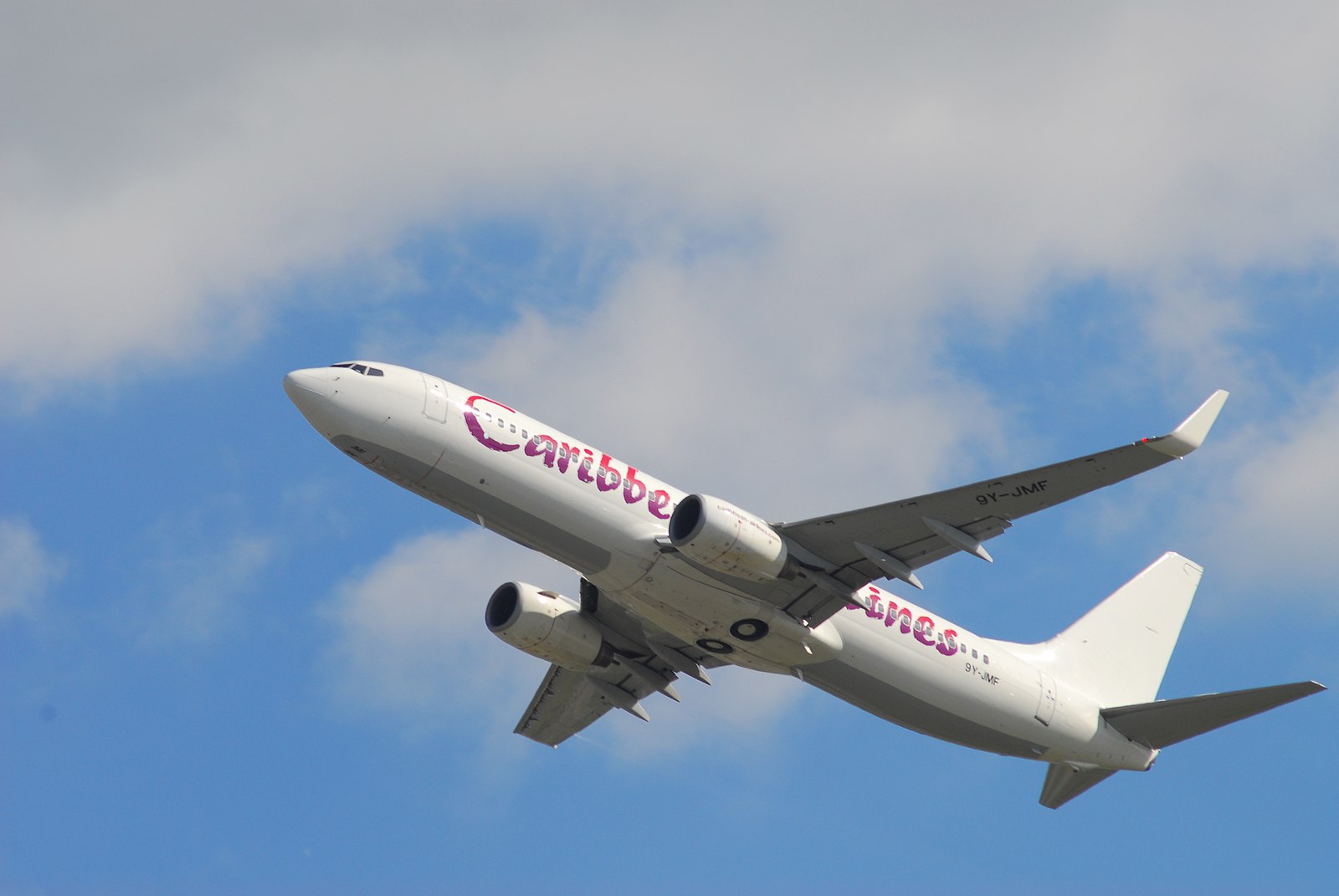
The Most Popular Food in Guyana
The culture of Guyana is an amalgam of many different influences, including those from the Caribbean, India, South America, Portugal, and China. The menu reflects the reality that there is a little bit of everything served. The versatile chickpea may be found in dishes as diverse as chow mein, BBQ pork sticks, and curry. Since fresh fruits are readily available, and every meal will be an enjoyable one.

Metemgee
Ground crop (such as cassava or potatoes) and meat are the typical components of this meal. The sauce is thickened with coconut milk for an easy one-pot meal. It’s the kind of Guyanese Creole that everyone loves.
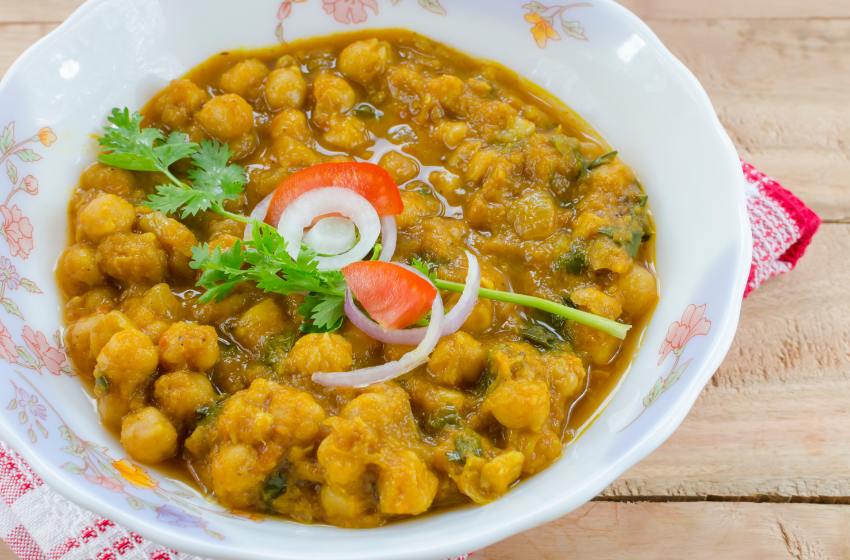
Guyanese Curried Chickpeas
Happy news for vegetarians! A new plate to expand your collection of recipes. Don’t expect a boring chickpea meal here. These chickpeas are just as tasty as any meat-filled meal thanks to the addition of butter, lime juice, curry powder, and other spices.
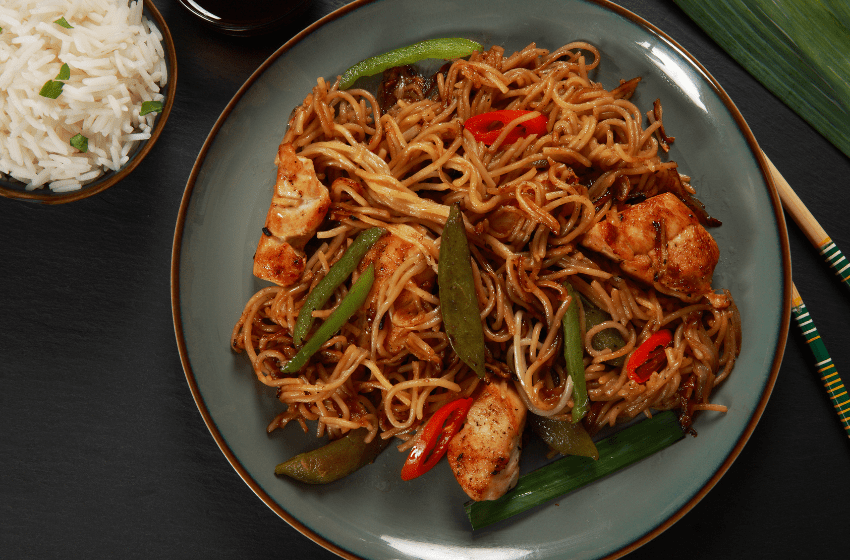
Guyanese Chow Mein
The Guyanese do, indeed, cook up a great rendition of the Chinese dish chow mein. What I have in mind is a dish consisting of noodles, various vegetables and a variety of meat or seafood, and a rich, flavorful sauce. The Guyanese twist on the Chinese classic comes from the addition of cassareep, a sauce made from cassava. This is a gorgeous fusion of flavors because to the incorporation of oyster sauce, sesame oil, and soy sauce.

Pepper Pot
It’s the Christmas time tradition to eat Guyana’s national dish, the famous pepper pot. The cassareep and whatever meat is used create a thick, flavorful stew. Even though it’s most commonly prepared during the winter holidays, some individuals make it all year long.

Guyanese Oil Roti
Indian flatbread roti (also known as paratha) has a crispy outside and a light, airy inside, making it ideal for sopping up curries and other stews. You have already figured that the Guyanese have fallen in love with this delicious bread. In fact, roti is often offered as a side dish with many of their cuisines. Therefore, if you want to truly immerse yourself in the cuisine, you need to master the art of making this mouthwatering bread.
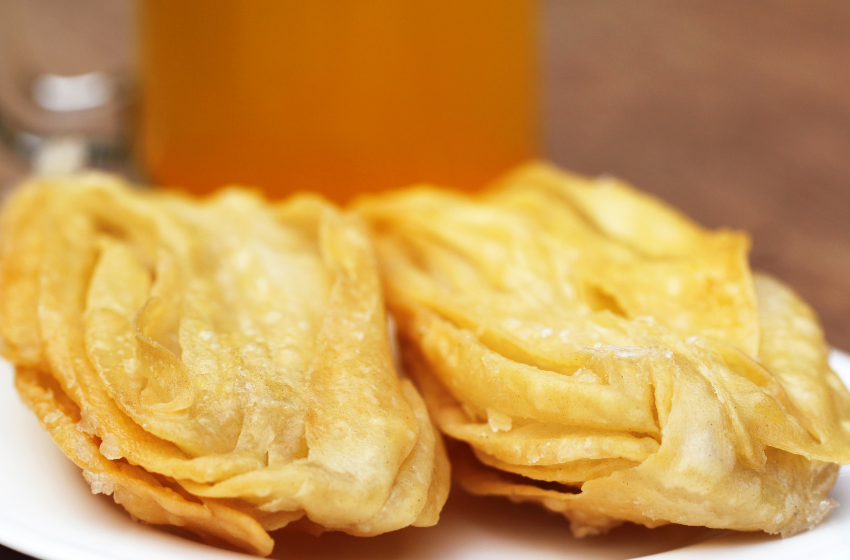
Gojas
For those interested, gojas are the Guyanese equivalent of the Indian dessert gujiya. Coconut, brown sugar, and ginger are seasoned and baked into turnovers before being fried. Ahead of you lies a mind-blowing experience if you have never tasted this flavor combo before. Everything about this filling is top-notch, from the intoxicating scent to the delicious tastes to the intriguing variety of textures. Gojas, especially when encased in a pastry that is both crunchy and soft, are delicious.
What's the Travel Budget for Guyana
Flights
- Flights start at roughly $337 from nearby countries. Tickets however on average cost around $850 and can cost way more depending on which class and from which country you depart from.
Accommodation
- Nomad Backpacking style travelers can expect to spend around $250 for a week
- Budget travelers can expect to spend around $350 for a week
- Mid-range travelers can expect to spend around $650 for a week
- Luxury travelers can expect to spend around $1,200 for a week
Food Budget (Three meals and drinks)
- Nomad Backpacking style travelers can expect to spend around $20 per person per day
- Budget travelers can expect to pay around $25 per person per day
- Mid-range travelers on average would cost $30 to $55 per person per day
- Luxury travelers can expect to pay around $60 to $80 per person per day
Overall Budget Styles (Not including Flights, Tours, Transportation, or Car Rental)
- Nomad Backpacking style travelers can expect to spend roughly $450 for a week
- Budget travelers can expect to spend close to $600 for one person for a week
- Mid-range travelers can expect to spend approximately $1,200 for one person for a week
- Luxury travelers can expect to spend around $1,800 for one person for a we7
Flights
- Flights start at roughly $337 from nearby countries. Tickets however on average cost around $850 and can cost way more depending on which class and from which country you depart from.
Accommodation
- Nomad Backpacking style travelers can expect to spend around $250 for a week
- Budget travelers can expect to spend around $350 for a week
- Mid-range travelers can expect to spend around $650 for a week
- Luxury travelers can expect to spend around $1,200 for a week
Food Budget (Three meals and drinks)
- Nomad Backpacking style travelers can expect to spend around $20 per person per day
- Budget travelers can expect to pay around $25 per person per day
- Mid-range travelers on average would cost $30 to $55 per person per day
- Luxury travelers can expect to pay around $60 to $80 per person per day
Overall Budget Styles (Not including Flights, Tours, Transportation, or Car Rental)
- Nomad Backpacking style travelers can expect to spend roughly $450 for a week
- Budget travelers can expect to spend close to $600 for one person for a week
- Mid-range travelers can expect to spend approximately $1,200 for one person for a week
- Luxury travelers can expect to spend around $1,800 for one person for a we7
Flights
- Flights start at roughly $337 from nearby countries. Tickets however on average cost around $850 and can cost way more depending on which class and from which country you depart from.
Accommodation
- Nomad Backpacking style travelers can expect to spend around $250 for a week
- Budget travelers can expect to spend around $350 for a week
- Mid-range travelers can expect to spend around $650 for a week
- Luxury travelers can expect to spend around $1,200 for a week
Food Budget (Three meals and drinks)
- Nomad Backpacking style travelers can expect to spend around $20 per person per day
- Budget travelers can expect to pay around $25 per person per day
- Mid-range travelers on average would cost $30 to $55 per person per day
- Luxury travelers can expect to pay around $60 to $80 per person per day
Overall Budget Styles (Not including Flights, Tours, Transportation, or Car Rental)
- Nomad Backpacking style travelers can expect to spend roughly $450 for a week
- Budget travelers can expect to spend close to $600 for one person for a week
- Mid-range travelers can expect to spend approximately $1,200 for one person for a week
- Luxury travelers can expect to spend around $1,800 for one person for a we7
Flights
- Flights start at roughly $337 from nearby countries. Tickets however on average cost around $850 and can cost way more depending on which class and from which country you depart from.
Accommodation
- Nomad Backpacking style travelers can expect to spend around $250 for a week
- Budget travelers can expect to spend around $350 for a week
- Mid-range travelers can expect to spend around $650 for a week
- Luxury travelers can expect to spend around $1,200 for a week
Food Budget (Three meals and drinks)
- Nomad Backpacking style travelers can expect to spend around $20 per person per day
- Budget travelers can expect to pay around $25 per person per day
- Mid-range travelers on average would cost $30 to $55 per person per day
- Luxury travelers can expect to pay around $60 to $80 per person per day
Overall Budget Styles (Not including Flights, Tours, Transportation, or Car Rental)
- Nomad Backpacking style travelers can expect to spend roughly $450 for a week
- Budget travelers can expect to spend close to $600 for one person for a week
- Mid-range travelers can expect to spend approximately $1,200 for one person for a week
- Luxury travelers can expect to spend around $1,800 for one person for a we7
If you want to know what to pack, read this list below:
- This is a conservative South American country with warm weather that tends to get hot in the summer and super rainy in the winter, dress accordingly
- Raincoat or Light Waterproof Jacket
- Hiking Boots or Sturdy Sneakers (Shoes You Don’t Mind Getting Wet)
- Sunscreen
- Insect Protection – Repellent and Clothing
- Sunglasses and Sun Hat
- Water Shoes
- Beach Towels/Sarong
- Dry Bag
- Money Belt or Cross Bag
- Portable Medical Kit
- Flashlight or Headlamp
- Copies of your passport.
- Get all the needed vaccinations before traveling
- A power bank is a must in any travel.
- Always have some cash with you just in case there are no ATMs and if you are dealing with a business that solely accepts cash
- Get yourself an adapter for your gadgets
- 1 toothbrush
- 1 tube of toothpaste
- 1 razor
- 1 package of dental floss
- 1 small bottle of shampoo
- 1 small bottle of shower gel
- 1 towel
- Deodorant
- Band-Aids
- Hydrocortisone cream
- Antibacterial cream
- Earplugs
- Tylenol
- Hand sanitizer (germs = sick = bad holiday)
- A key or combination lock
- Zip-lock bags
- Plastic bags (great for laundry)
- Universal charger/adaptor
- LifeStraw (A water bottle with a purifier)
- 1 dry shampoo spray & talc powder
- 1 hairbrush
- Makeup you use
- Hairbands & hair clips
- Feminine hygiene products
Clothing For Boys
- 1 pair of jeans or khaki pants
- 1 pair of shorts
- 1 bathing suit
- 5 T-shirts
- 1 long-sleeved T-shirt
- 1 pair of flip-flops
- 1 pair of sneakers
- 6 pairs of socks
- 5 pairs of boxer shorts
Clothing For Girls
- 1 swimsuit
- 1 sarong
- 1 pair of stretchy jeans
- 1 pair of leggings
- 2-3 long-sleeve tops
- 2-3 T-shirts
- 3-4 spaghetti tops
- 1 light cardigan
Want to plan your own trip, here are some of the best resources that can help you
- Skyscanner – They search small websites and budget airlines that larger search sites tend to miss. They are hands down the number one place to start.
- Momondo – This is another favorite flight search engine because they search such a wide variety of sites and airlines. Always check here too.
- Booking.com – The best all-around booking site that constantly provides the most affordable and lowest rates. They have the widest selection of budget accommodation.
- Couchsurfing – This website allows you to stay on people’s couches or spare rooms for free. It’s a great way to save money while meeting locals who can tell you the ins and outs of their city. The site also lists events you can attend to meet people (even if you’re not staying with someone).
- Intrepid Travel – If you want to do group tours, go with Intrepid. They offer good small group tours that use local operators and leave a small environmental footprint.
- Grassroots Volunteering – For volunteering, Grassroots Volunteering compiles a list of good local volunteer organizations that keep the money within the community.
- Get Your Guide – Get Your Guide is a huge online marketplace for tours and excursions. They have tons of tour options available in cities all around the world, including everything from cooking classes, walking tours, street art lessons, and more! It has the world’s largest collection of things to do with more than 30,000 activities in 7500 destinations.
- SafetyWing – Safety Wing offers convenient and affordable plans tailored to digital nomads and long-term travelers. They have cheap monthly plans, great customer service, and an easy-to-use claims process that makes it perfect for those on the road.
- Trip Advisor: Check the reviews and then book your accommodation. TripAdvisor is where you go when you want to compare prices with multiple accommodation providers.
- VRBO: is the main search engine to use when you are looking for a home or apartment rental. It can sometimes be cheaper than hotels and it is the best way to stay in areas that offer a more local feel.
- Hostelworld: With one of the largest databases of hostels in the world, Hostelworld is the go-to site when you are looking for budget accommodation.
- Rome 2 Rio: If you want to see how to get somewhere by plane, train, bus, ferry, or car Rome2Rio lays it all out for you as well as related costs.
- World Nomads Insurance: When traveling you should always have travel insurance. We have found the best bang for your buck is by far World Nomads.
Final Thoughts on Guyana
Guyana is appealing for many reasons, despite its shortcomings, its rich history and culture, which can be seen in its traditional and ancient buildings and rural landscapes, its unusual and beautiful landmarks, not to mention the big chunk of the Amazon Rainforest that it has within its borders, and other conservation zones teeming with wildlife, will keep you on your toes. The unbelievable warmth the locals give and the warm weather, its exciting events and festivities, and its vivid picture-perfect surroundings of highlands and pristine forests and shores, ideal for spotting the beautiful wildlife. Evidence suggests that Guyana’s history extends back much further than 1,000 BC. A piece of a fallen South American civilization and a meeting point for a number of different cultures; one of the top travel destinations. With its stunning scenery, a wide variety of wildlife, and intriguing historical sites, Guyana may not be a popular tourist destination, but activities including its vast forests or witnessing the beautiful sunsets in the highlands, or a beach in an off-the-beaten track setting may intrigue you. Are you planning on going on a trip to Guyana?
Have you ever been to Guyana? Post your thoughts, questions, and concerns down below.